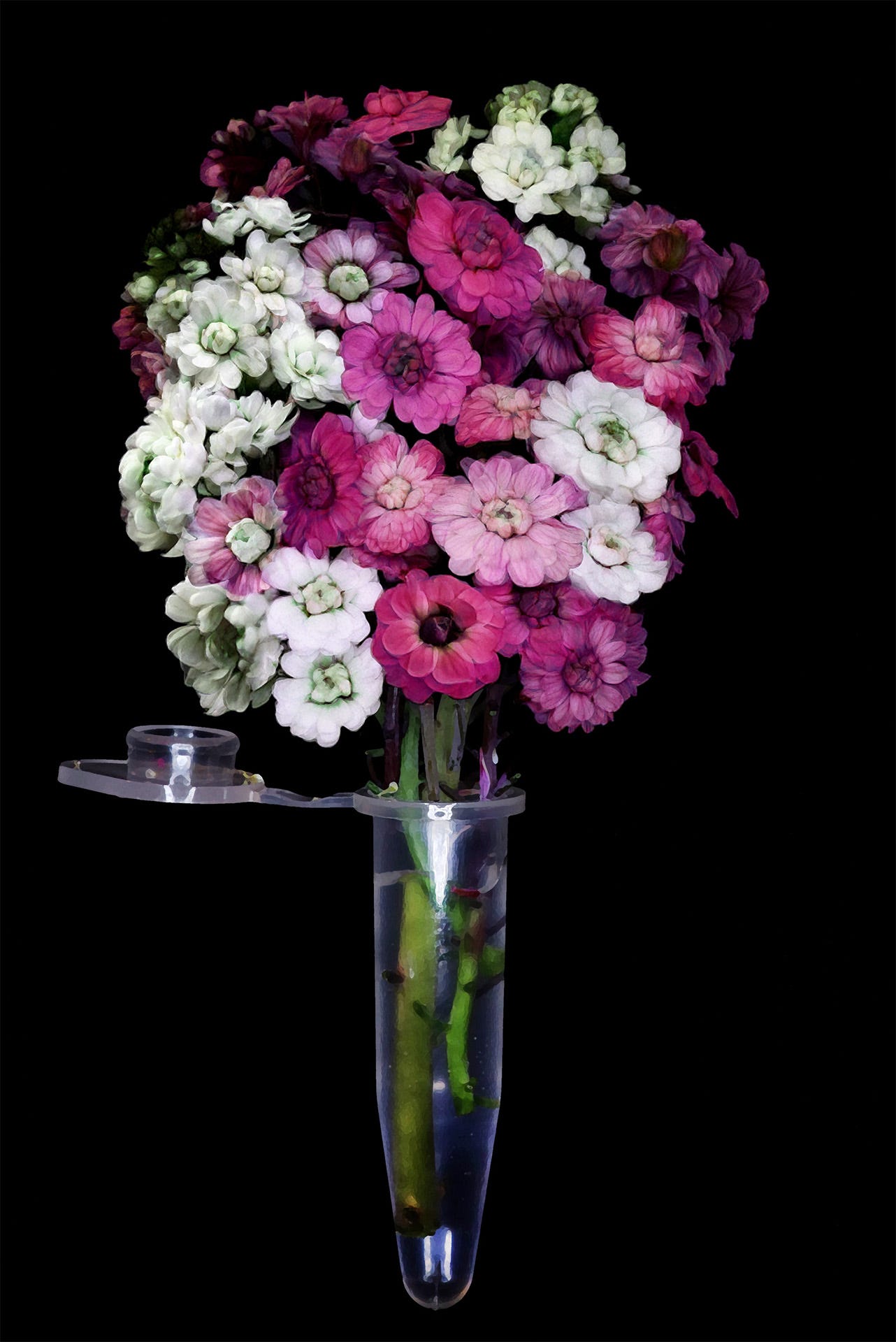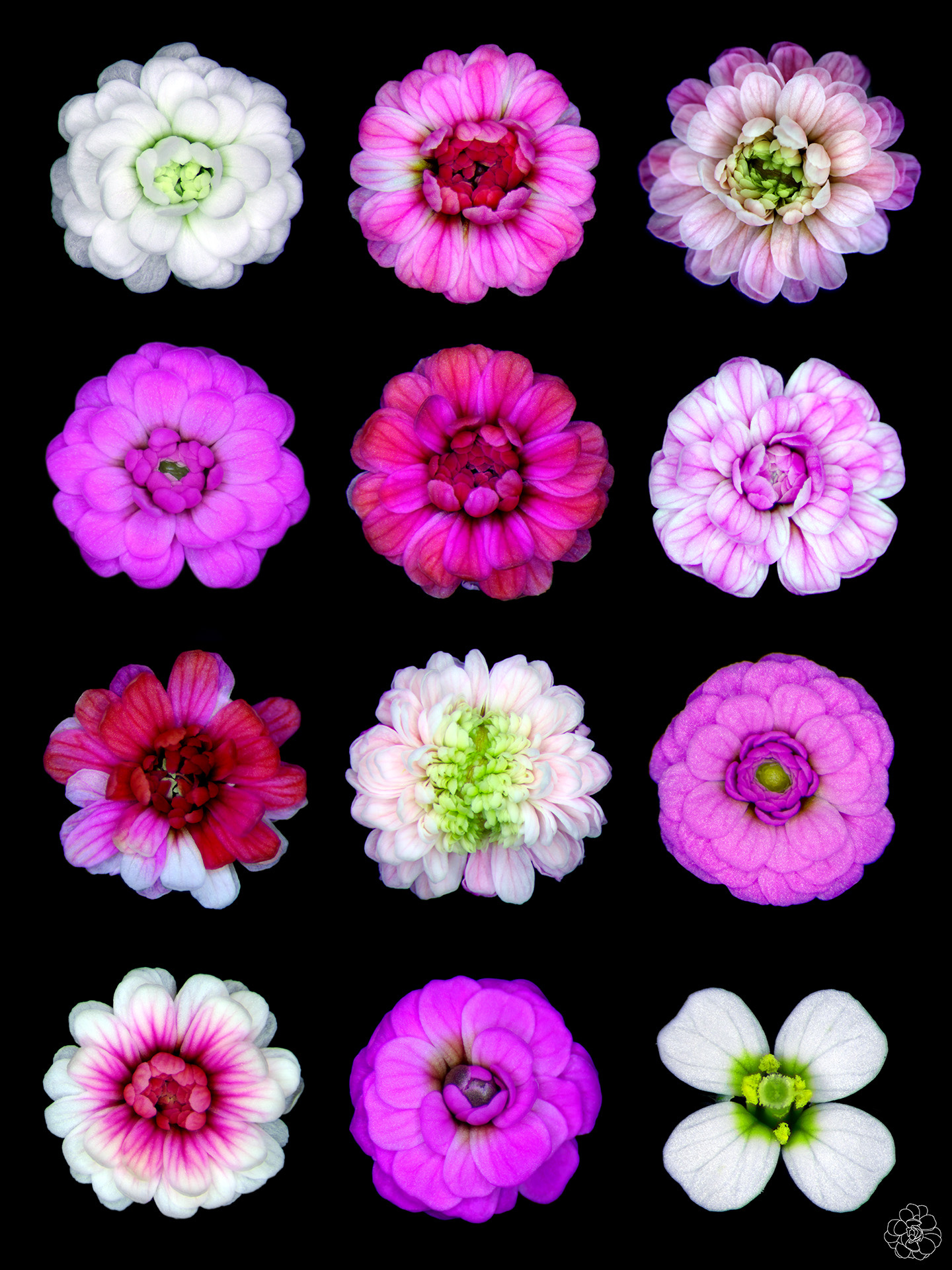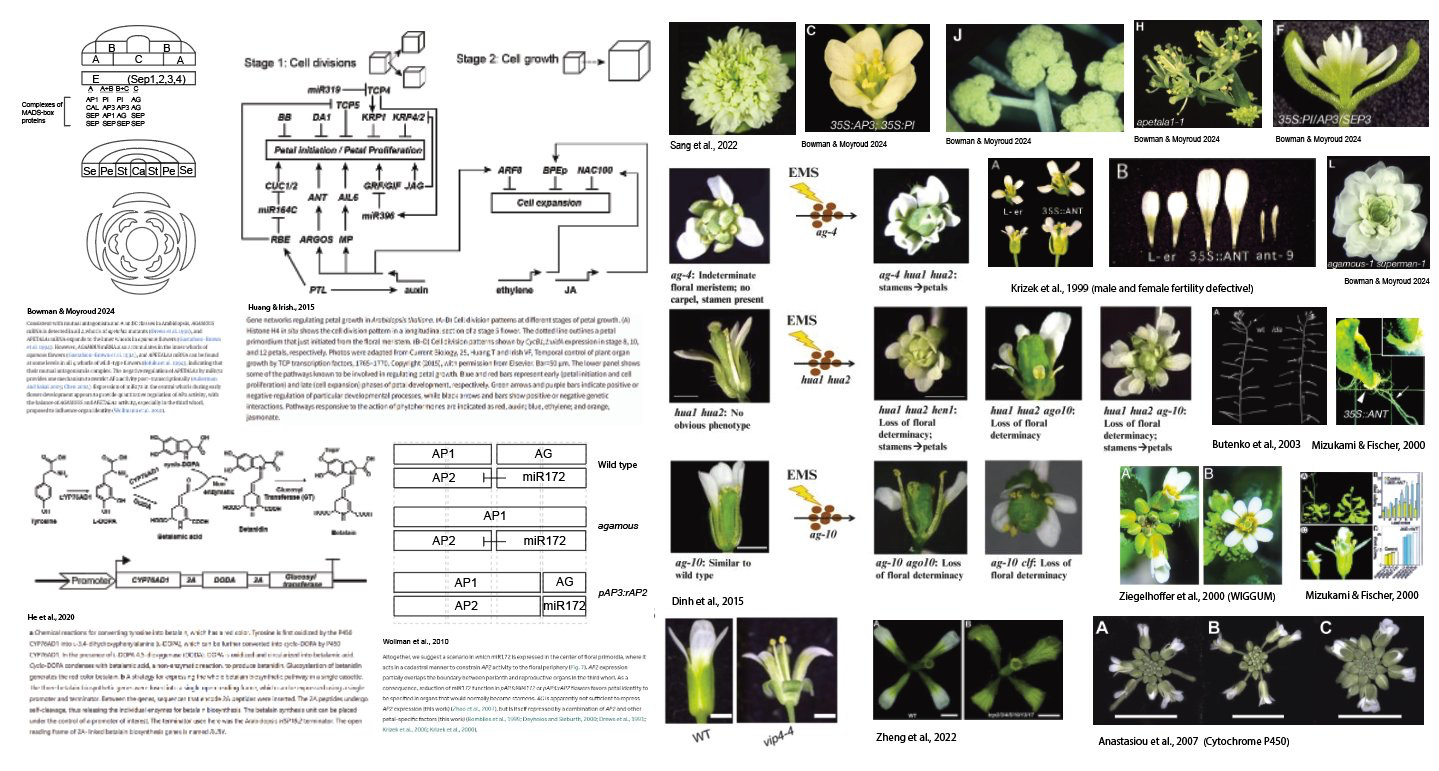The Flower Designer
A plant biologist’s quest to design and create 1,000 unique flowers, mostly in his spare time.
In the Dutch Republic of the mid-17th century, a single rare tulip bulb sold for sums greater than a skilled craftsman’s annual salary. In 1623, one bidder offered 12,000 Dutch guilders — equivalent in value to an entire townhouse in Amsterdam — for 10 bulbs of a now lost tulip variety called Semper Augustus, with white petals and dark, red flames. This was around the time of “tulip mania,” when people invested in flowers as they would works of art.
Breeding flowers for unique and desirable traits was nothing new at that time, however. Roses had been carefully bred by ancient Chinese, Persian, and Roman gardeners, and the saffron crocus (Crocus sativus) had been cultivated in ancient Greece so intensively that all saffron plants today descend from this Greek progenitor.
During tulip mania, however, the most prized varieties of all — those with variegated streaks of color against a solid base — were not the result of fortuitous breeding, but rather viral infection. The pathogen responsible, the Tulip Breaking Virus, interfered with pigment production in the petals, causing the streaking. Buyers believed they were investing in reproducible beauty, but bulbs from these tulips didn’t reliably yield the same patterns. The tulip mania bubble burst after three years of wild speculation (1634-1637); prices collapsed almost overnight, and some fortunes were decimated.
Plant biology has come a long way in the centuries since. Today, desired plant varieties are often made through repeated cycles of mutagenesis — triggered by x-rays or chemical exposure — and careful selection. Breeders single out traits they like and propagate them. More than 2,000 varieties of plants, including the Rio Red Grapefruit, were made in this way.1 Recently, genetic engineering has taken this a step further, enabling scientists to alter a plant’s DNA far more precisely than they could with breeding alone.
A flower designer in the United Kingdom, named Nick Desnoyer, is combining all of these methods — breeding, genetic engineering, and even pathogenic infections — to create bespoke flowers. He does this in his spare time, after his labmates have left for the day, and without making any profit. He hopes to inspire the next generation of plant biotechnologists.
Origins
“Designing flowers wasn’t my original intention,” Desnoyer told me. He was sitting in front of a whiteboard covered with Punnett squares and cryptic annotations relating to flower genes. “The whole thing,” he says, “began by accident.”
As a PhD student in Switzerland, Desnoyer, a night owl, often found himself working late in the plant biology laboratory. After his classmates had shuffled home for the day, he would remain behind, meticulously pollinating his specimens or taking videos of their development. Desnoyer, long fascinated with art and aesthetics, began making time-lapse videos of germinating seedlings or changing colors of a flower after pollination. He did this just for fun, posting the videos to his social media accounts. But this nightly ritual slowly grew into something far more ambitious: the design and creation of entirely new flowers.
Near the end of Desnoyer’s PhD, a colleague in the laboratory brought him a DNA sequence called RUBY, which encodes enzymes that make a pigment that turns plant tissues pink. Around that same time, Desnoyer became fascinated by an Arabidopsis mutant called agamous, which causes unusually beautiful, rose-like flowers and was discovered using chemical mutagenesis.2 Desnoyer decided to cross the agamous mutant with another Arabidopsis plant carrying the RUBY transgene, thus creating a plant with pink, rose-like flowers.
Although these flowers were the result of a simple cross, this experiment marked a turning point in Desnoyer’s career. He began sifting through the research literature — scouring papers many decades old — to find additional genes and phenotypes to use in his flower designs. And over the last two years, those designs have grown startlingly complex.
“Some might argue that we’ve already designed flowers through breeding,” Desnoyer says. There are dozens of plant breeders who focus on particular types of flowers; the Könst family in Amsterdam has made many new varieties of Peruvian lily, for example, with extended vase lives. “But their creation is just the result of mutagenesis and selection. It’s not true design, and it’s not engineering.”
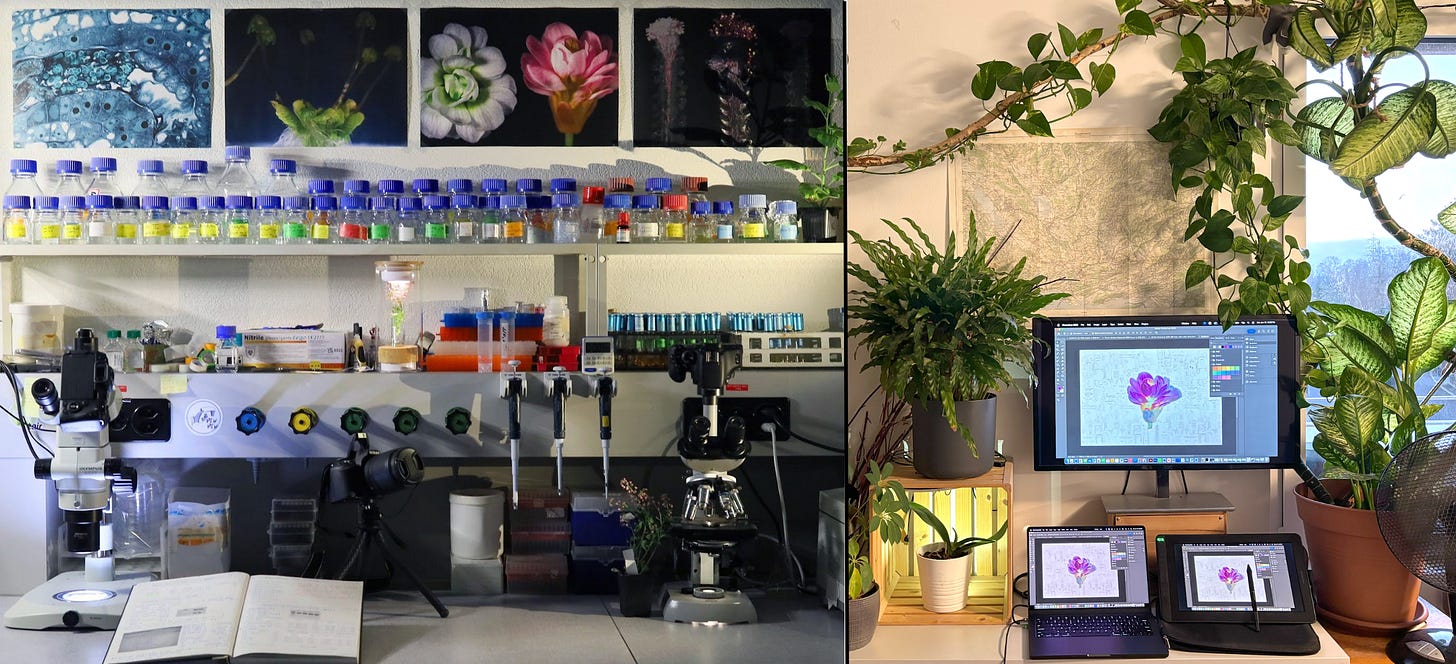
Desnoyer’s process, in contrast, is unquestionably “true” design. His lab notebooks are filled with diagrams and genetic circuits. Most of the flowers he has produced in his laboratory appear strikingly similar to the designs in this notebook, suggesting that he is largely able to create the flowers he envisions.
Desnoyer’s goal is to control flowers much as a painter controls pigments. His first artwork, entitled “12 little flowers,” pays tribute to Japanese artist Takashi Murakami’s “crying flowers,” which were made to acknowledge the cultural trauma of the bombings of Hiroshima and Nagasaki. Desnoyer’s second artwork, “Epi-bouquet2,” is a bouquet of flowers in a microcentrifuge tube; a nod to classical still-life paintings.
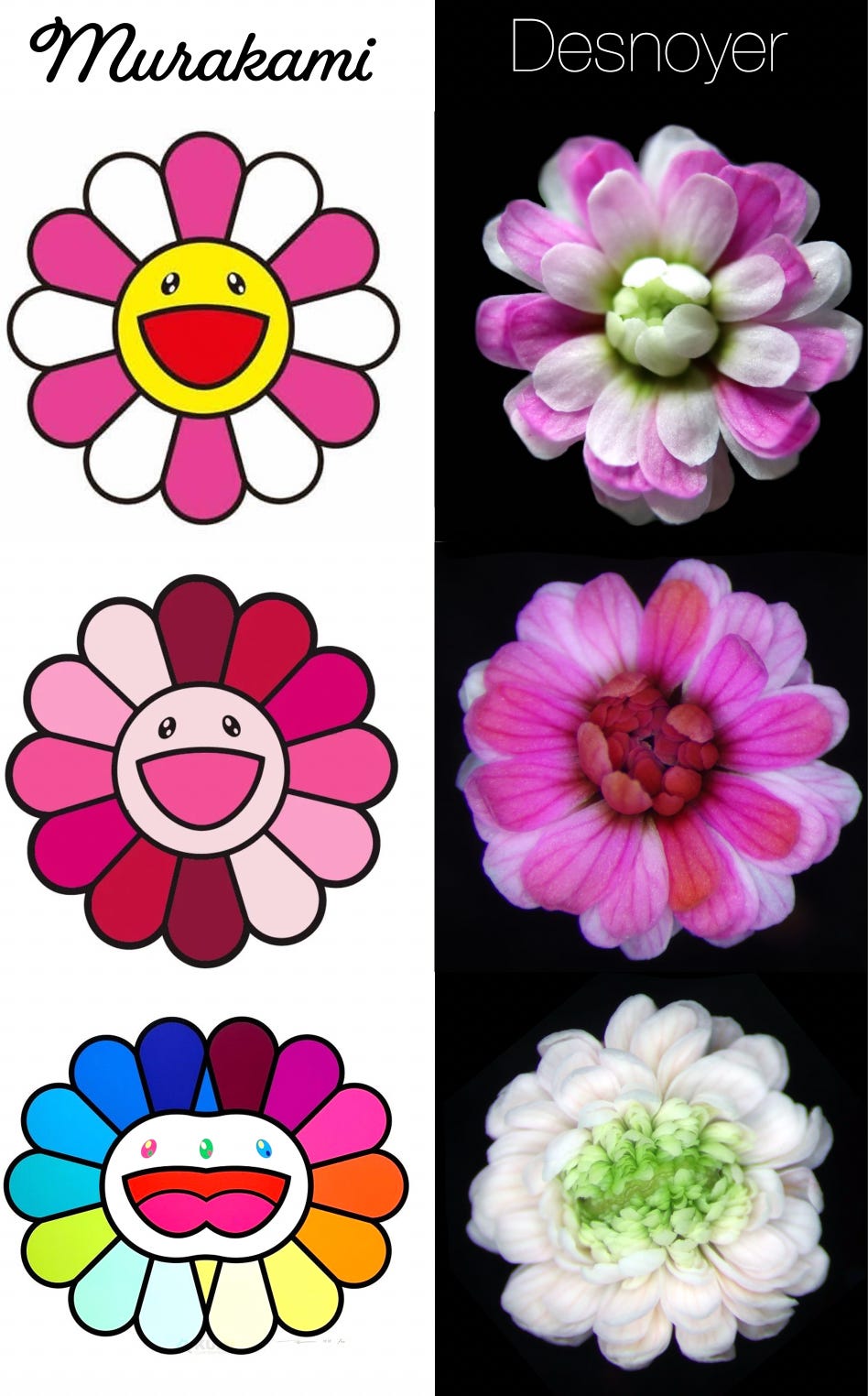
The Process
There is nothing secret about Desnoyer’s process. He uses the same tools available to every other plant biologist, but wields them in original ways.
Desnoyer thinks of his method as comprising two steps: genetic sculpting and genetic painting. Sculpting, he says, is all about designing the specific shapes and morphology of the flower. Then, the painting step uses gene sequences — encoding specific pigments and colorful patterns — to “paint” that sculpted canvas. Desnoyer is currently working on a “sunburst” flower that has a bleeding orange center and red stripes radiating outwards.
All of his design work begins with a literature search. Desnoyer has made two Illustrator files, titled “Floral Roadmap” and “Rose Breeding Tree,” to catalog all the interesting phenotypes he finds in the literature. He uses these phenotypes, and the genes responsible for them, to make his bespoke flowers.
Most of Desnoyer’s work thus far has focused on sculpting “base model” flowers, which he later genetically paints. One of his base models, called the “Micro-Rose,” is a variety of Arabidopsis thaliana that he bred and gene-edited, using CRISPR, to incorporate six mutations identified from his research. Since these Micro-Roses are built on the genetic backbone of Arabidopsis, they have all the advantages of a model organism with the aesthetics of an ornamental flower.
“Most of my designs come from Arabidopsis research originally published in the 1990s,” he says. “I didn’t discover any of these genes; I just put them together.” Specifically, Desnoyer’s Micro-Roses were made by mutating both agamous and superman genes, both of which are part of the “ABC” model of flower development.
Briefly, this class of ABC genes works together to determine the identity of the four whorls of a typical flower: sepals, petals, stamens, and carpels. Mutations in the agamous gene cause the production of petals and sepals in place of stamens and carpels, respectively. And because agamous is also involved in floral meristem termination, the resulting mutant flowers create an aesthetic phenotype of repeating whorls of sepals and petals. This phenotype can be further enhanced by mutations in superman, a boundary gene between the third and fourth whorls, to create flowers with apparently endless concentric whorls.
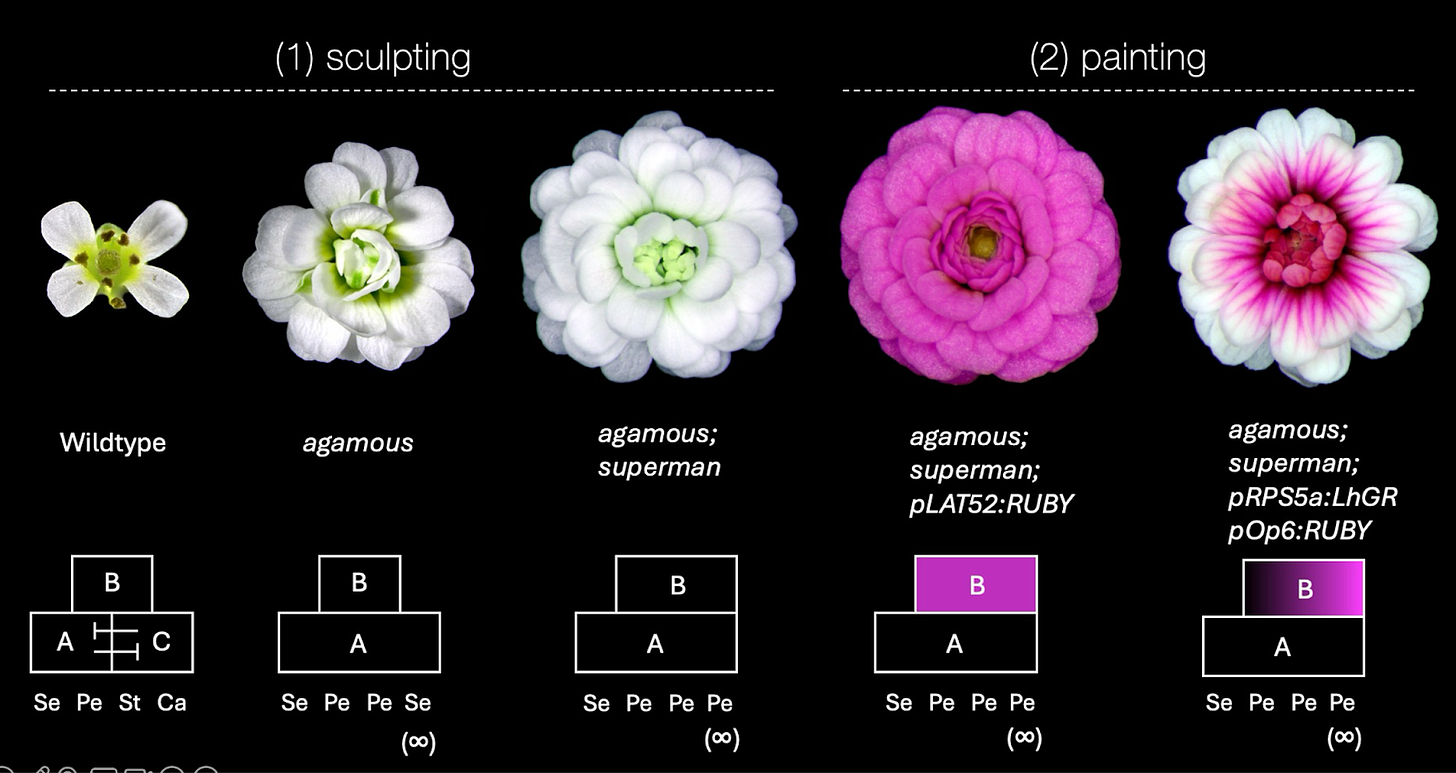
After designing a base model, Desnoyer next maps out the colors and patterns. He might take a Micro-Rose and cross in a RUBY transgene expressed only in the petals, for example, to add a striking pink color. Or, he can add a specialized transgene that induces RUBY expression only where a hormone is added. By placing a drop of a chemical called dexamethasone in the center of the flower during its later stage of development, for example, he is able to coax the flower to express RUBY in its inner whorls, bleeding out from the center like the sun.
Desnoyer is now creating a palette of pigment genes — again pulled from the literature — to paint flowers in shades of yellow, peach, amber, purple, and green. During our meetings, he often repeated the famous Isaac Newton quote: “If I have seen further [than others], it is by standing on the shoulders of giants.” Desnoyer’s flowers may look like magic, but he readily concedes that they are “the fruits of basic research carried out by thousands of scientists” before him.
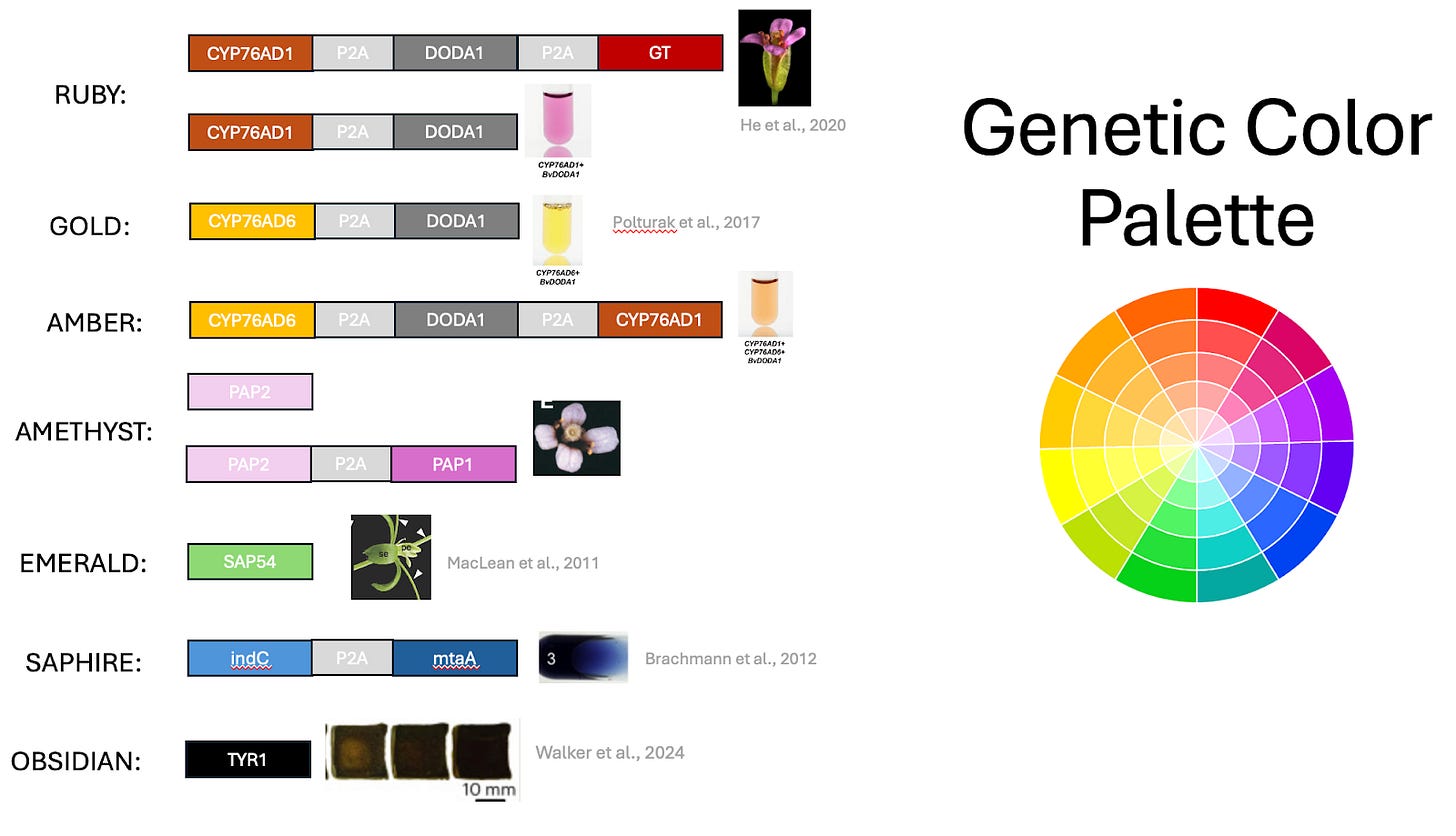
1,000 Flowers
Desnoyer’s ultimate goal is to design and create 1,000 flowers. This number stems from a Japanese legend about a little girl who lived in Hiroshima when the bomb fell in 1945. This girl, Sadako Sasaki, developed leukemia and spent many years in the hospital. As she grew sicker, she decided to fold 1,000 origami paper cranes, a task traditionally believed to grant one’s wish for good fortune upon completion. In one version of the story, Sasaki dies before she can complete the full total, but her friends and family finish the task for her.
Desnoyer, too, hopes that his project will inspire others to join him in his broader mission of plant engineering. While venture capitalists have already reached out to ask whether he plans to sell the flowers, Desnoyer has said “no” every time. Instead, he plans to start a nonprofit that creates artwork and releases open-source tools for engaging the public and teaching biology. “The ability to engineer life is the single most profound thing we can do,” Desnoyer says. “The capacity to design flowers is therefore … a motivation that far outweighs money.” Most of Desnoyer’s current work is funded solely by a one-time, $10,000 grant from O’Shaughnessy Ventures.
This indifference to profit is remarkable, in part, because flowers can — and have — made people very rich. Flowers are a $35 billion business in the United States alone. The Juliet Rose, developed over a 15-year period and brought to market in 1978, cost $3 million to develop but remains enormously profitable today.
Desnoyer admits that his mission is not so much practical as it is about field building. “I'm not going to feed the world with these flowers,” he says, “but I do think I can inspire people and get them interested in plant biology.”
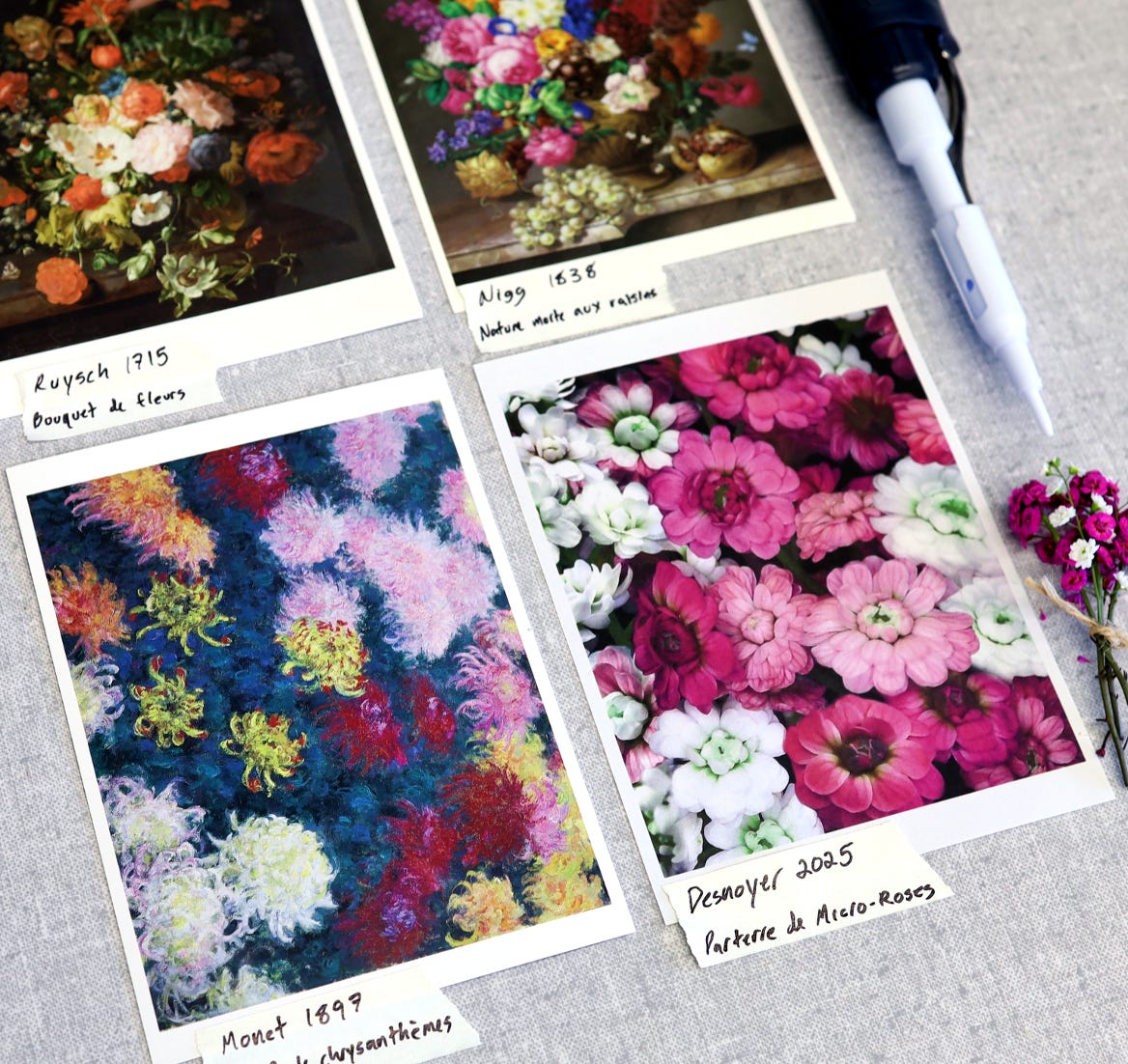
If you’d like to support Nick Desnoyer’s work, please visit his website and consider buying some of his artwork. He is giving away free shirts to the first 100 people.
Niko McCarty is a founding editor at Asimov Press.
Cite: McCarty N. “The Flower Designer.” Asimov Press (2025). https://doi.org/10.62211/83gh-99pk
All images in this article were provided by Nick Desnoyer.
More specifically, a joint program between the Food and Agriculture Organization and the International Atomic Energy Agency estimates that, between 1971 and 2011, 2,965 crop cultivars released worldwide were made via induced mutations.
Also known as thale cress, Arabidopsis is a small plant from the mustard family. A model organism, it is, perhaps, the most widely-used plant species in all of botany research.

